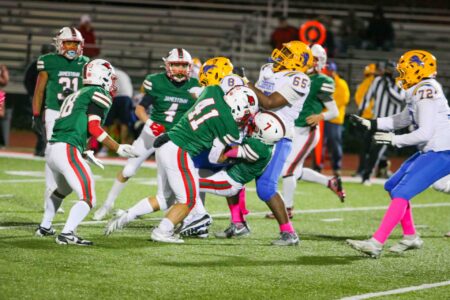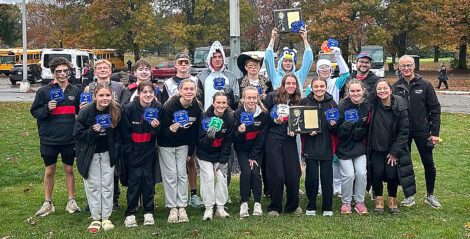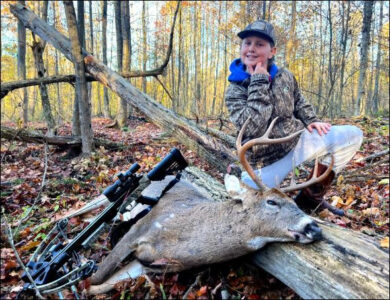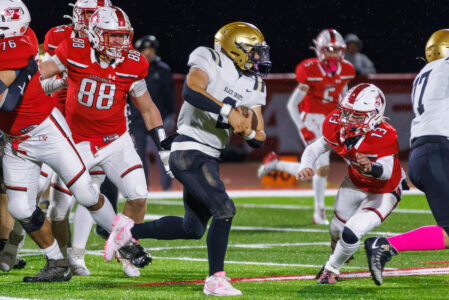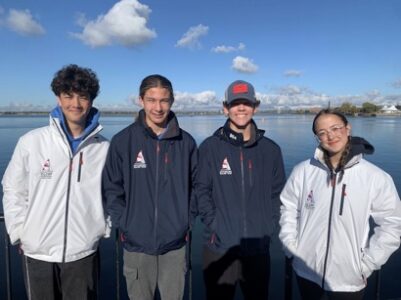Memorialize Your Hunting Success With A Great Photo
Everyday Hunter

With her recent 12-point buck, Audrey Zimmerman illustrates what a good photo is. Photo courtesy of Audrey Zimmerman
A great photo is an important trophy of the hunt, and one that helps tell the story. Unfortunately, we hunters spend lots of time planning for success but shortchange ourselves by spending too little time recording our success with a worthy photo.
We don’t need an expensive camera. We don’t need advanced photography skills. All it takes is some time. I often devote an hour to getting that photo. Yes, I have reason to get the best photo possible, but you have good reason too. That photo might end up being the last thing you have left to commemorate a day of success.
You might say, “No, I’ll always have the mount.” But taxidermy is lost in fires, floods, divorces and other tragedies. A photo can safely and easily be stored in several places at the same time you’re carrying it with you on your smartphone.
It takes only a little planning. First, be sure to have a camera with you, along with a way to mount it. Your smartphone qualifies for the job. I made a phone holder out of one intended for use in a car. I cut the holder off its mount and fastened it to a cheap squeeze clamp. You can just as easily use a strap. It costs almost nothing to have a ready way to secure your phone to a small tree.
I learned that the hard way. Last year the battery went dead in my big camera, and I had no way to attach my phone to anything. Set up your photo, find the timer feature on your phone, then jump back into position and wait for the photo to snap.
You best preserve the memory by taking the photo where you shot the deer, showing the habitat where you hunted. Be sure to eliminate the blood. That was less important in the days of black and white photography, but color isn’t as forgiving. The last thing you want is to show the photo to a friend and watch her (note: it’s not always a woman) wretch at the sight of blood. So, carry a damp rag in a zipper bag or use leaves to wipe blood away.
The best way to minimize blood is to have your photo session before field dressing the deer. And you will make the photo more lifelike if you tuck the deer’s tongue into its mouth before snapping the shutter. Some hunters go a step further to take a lifelike photo–they carry a pair of taxidermy eyes and insert them like contact lenses into the deer’s eyes to avoid dead-eye reflection.
Pay attention to the light. The light should be coming from behind the camera. Light facing the camera will make the subject (you and your deer) appear dark while everything around you is bright. The elevation of the camera is also important. Don’t shoot down on the subject. You’ll get a much better photo with the camera at eye level or lower.
The late Gordon Mahan, longtime photographer for the Warren Times Observer, once told me that the number one secret to taking a good photo is to take lots of photos. That was the best photography advice I’ve ever been given. In the age of film photography, his advice was expensive. In the age of digital photography, his advice is still great, and cheap. You’ll get a better photo by taking 20 or 30 from a variety of angles and camera settings, including horizontal and vertical formats, and choosing the best later. Taking a photo is never a one-and-done proposition, even for professionals.
Getting a great deer harvest photo, one that does the deer justice and will last a lifetime, requires nothing more than a simple camera and a little time. So, look happy. Make sure the smile on your face is a big one, because sometimes you think you’re smiling but you’re not. And shoot away.
ııı
When “The Everyday Hunter” isn’t hunting, he’s thinking about hunting, talking about hunting, dreaming about hunting, writing about hunting, or wishing he were hunting. If you want to tell Steve exactly where your favorite hunting spot is, contact him through his website, www.EverydayHunter.com. He writes for top outdoor magazines, and won the 2015, 2018 and 2023 national “Pinnacle Award” for outdoor writing.

